Traditional folk clothes have any people. For Russian women, such a dress is a shirt with a sundress. At the same time with the increasing interest in the ethno-style and history of their country, Russian sarafans today became the object of attention of fashion designers. Let's learn more about such clothes and their use in the past and in modern wardrobe.
Features
The traditional dress is distinguished by a direct free cut. Greater freedom of movement in such clothes provided inserts between the details of the product. The contour of the Russian sundress can be called smooth and very soft. This was especially noticeable in motion.
In addition, the characteristic features of the sundress are:
- Considerable skirt length.
- Long sleeves.
- Layered outfit.
- Original decor in the form of complex bright ornaments.
- Great weight attire.
A bit of history
Until the 16th century, a long dress for men was called a sundress, and only later this name was transferred to women's clothing, which was either worn over the head or buttoned in front.
Since the 18th century, the Russian sundress has changed, which is associated with the reforms of Peter I, introducing a European-style costume into Russian society. Sundresses continued to wear only burghers, merchants and peasants.
Such traditional clothes lasted the longest among the peasants for the longest time, so it was the peasant version of the sundress that concentrated in itself all the typical features of this element of the Russian costume.
Who is going to?
In a Russian sundress, a woman of any body size and any age will look attractive and original. Due to the free cut such clothes do not constrain movements and completely hide any flaws in the figure.
Varieties
Sundresses in Russian folk costume were represented by the following types:
- Tunic-like sundress, which has no middle seam. This outfit was also called deaf, because it was sewn from a single piece of cloth and side panels. This type of sundress is the most ancient. The front cut-out was usually small, rectangular or round. Also there was often a small incision in it, on which there were strings or a fastener on a button. For tailoring deaf sundresses used cloth, canvas and other homespun cloths. On the hem, armholes for hands and necklines, the items were trimmed with a bucket, painted canvas, applique or embroidery in the form of narrow strips.
- Kosoklinnaya model. For sewing such a sundress used one solid back panel, two straight front webs and oblique side wedges. The front canvases could be sewn or fastened with the help of loops of lace or metal buttons. For these sundresses used as homespun cloths, and factory-made fabrics. They were sewn from brocade, taffeta, Chinese, velvet, linen fabrics, silk, cloth, wool and other materials. Some of these sundresses had a tight lining, sometimes quilted. To decorate everyday variations of a kosoklinnaya sundress, textile ribbons or bucket strips were used, and festive attire was trimmed with braid, braids, silk ribbons, fringe or metallic lace.
- Direct model This sundress, which was also called Moscow or round, became the most common model in the 19th century. In the manufacture of such a sundress used straight panels, which were collected in small folds in the upper part. Sewn straight sundresses mainly from factory fabrics.For the straps used the same fabric as the skirt, or replaced it with braid. The hem of this dress was decorated with ribbons or lace.
- Model with a bodice. Such a sundress had a fitted bodice to which straight panels were sewn to create a voluminous skirt. Such clothing was common in the central part of the country. Also separately distinguished sundresses, whose bodice was on a yoke.
The main and derived types of Russian sarafans are presented in the following figure.
Popular colors
The characteristic features of the Russian women's costume are the multicolor and peculiar ornament. Favorite color for sundresses was red. That was the color of wedding sundresses.
White sundresses with golden patterns looked gorgeous.
Also in the color of the dress there were shades of blue, brown, black, orange, brown and yellow. Older women wore more often a blue or black sundress.
Modern tendencies
Designers now quite often use the Russian folk costume as a creative basis for their collections. They add elements of the Russian sundress to modern clothes.
Traditional sundresses are also gaining popularity. They are bought for thematic events, children's matinees or festivals.
Nowadays, Russian sarafans respond to constructive forms that were used for sewing such clothing in the past. Modern costumes trimmed with folk embroidery, presented in different quantities. It can only serve as an accent and an interesting decor, and can richly decorate a product.
What to wear?
In the past, the dress was worn with a long shirt, which was most often white. Now, under the sundress, they also wear mainly a shirt with long sleeves, decorated with embroidery, but sometimes it is replaced with a white blouse. In winter, a Russian dress is worn with a fur coat or a warmer jacket.
Footwear
Summer models of the Russian sundress are worn with wicker sandals. In cool weather, boots are ideal for this.
Accessories
All jewelry and other accessories are selected taking into account the event in connection with which the Russian sundress is worn.
Both short and long beads, bright metal or plastic bracelets and earrings, ribbons, as well as knitted bags made in ethnic style are suitable for such clothes. A stylish addition to the Russian sarafan is a lace kokoshnik.
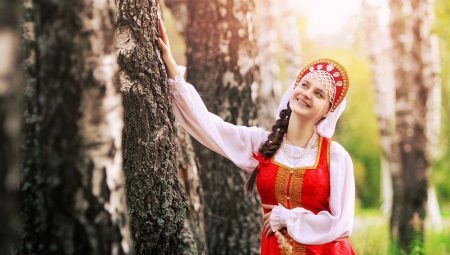
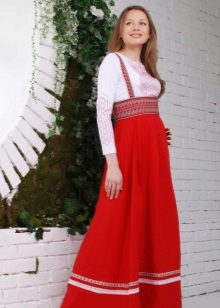
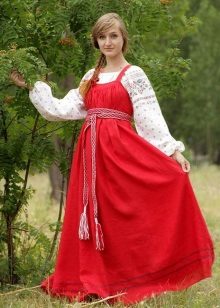
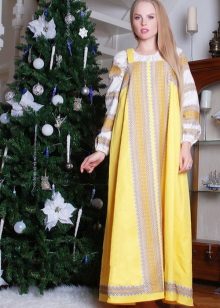
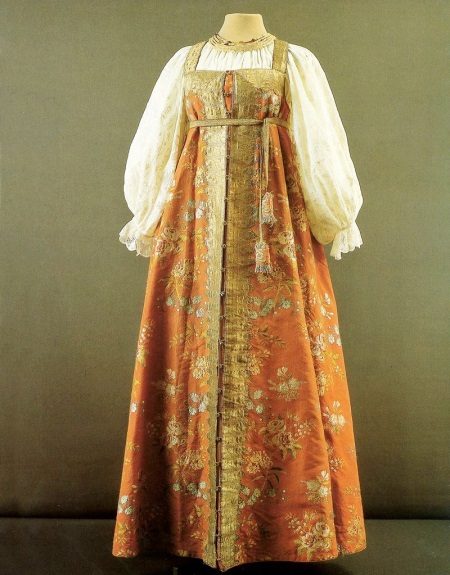
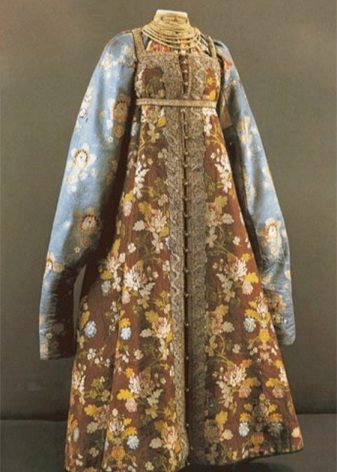
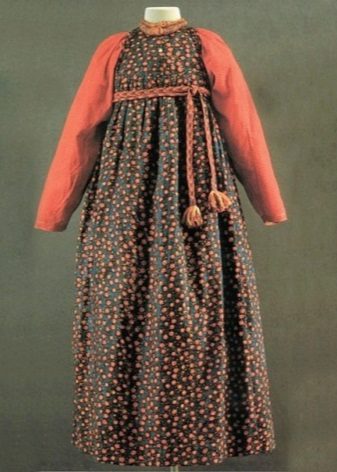
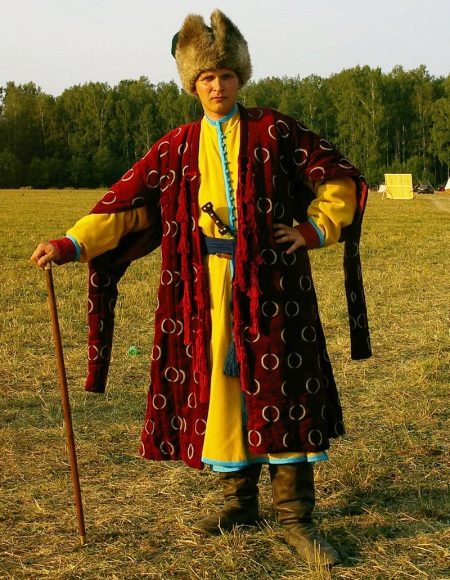
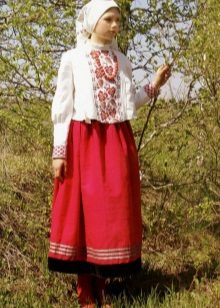
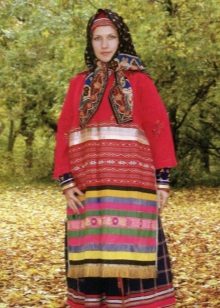
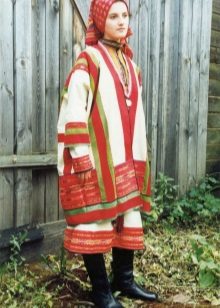
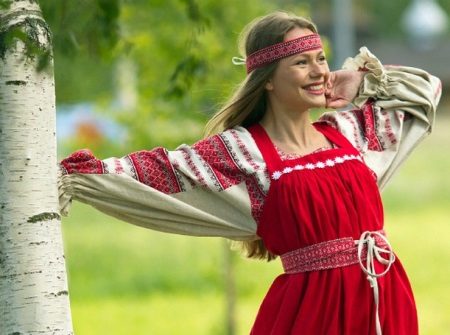
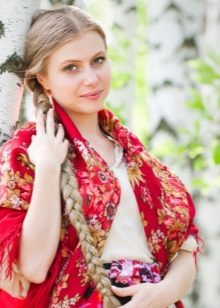
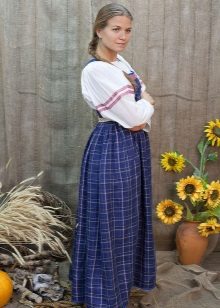

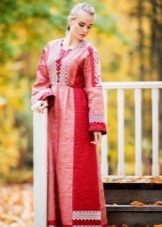
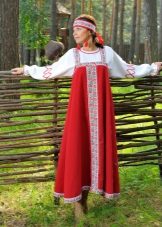
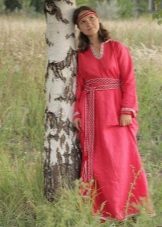
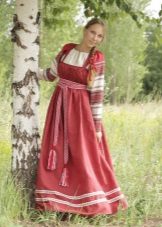
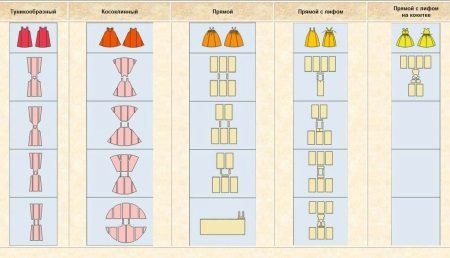
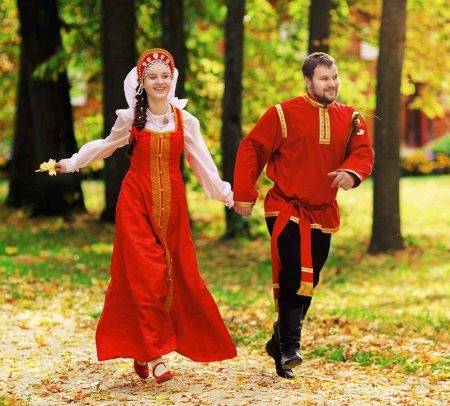
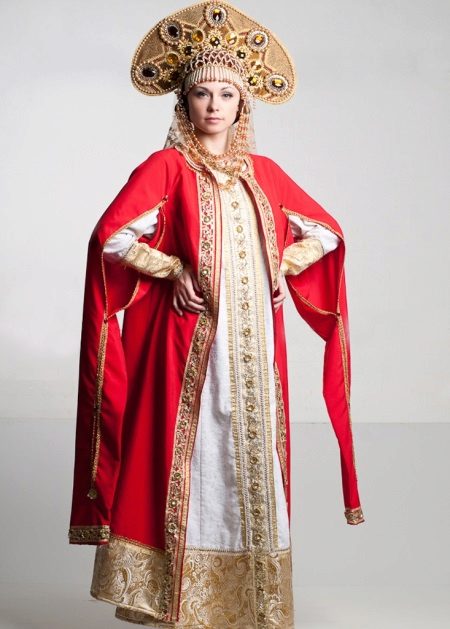
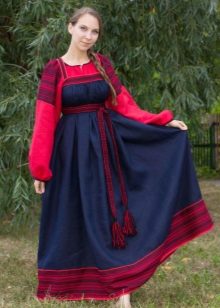
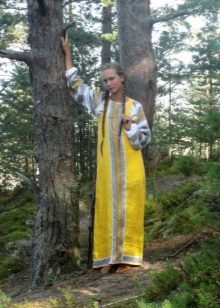
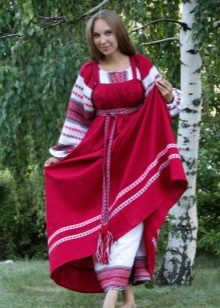
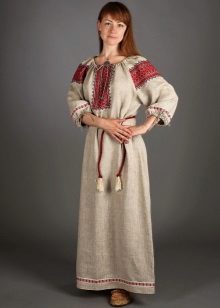
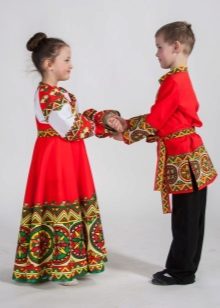
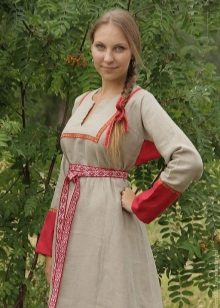



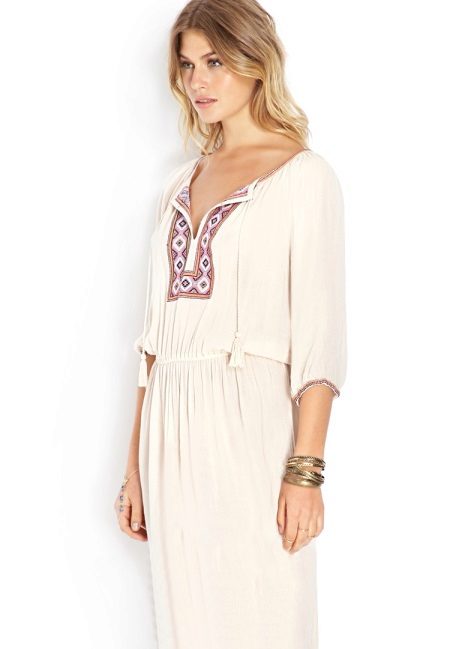
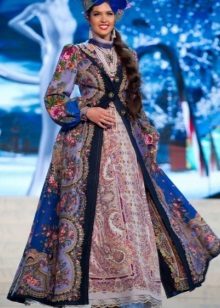
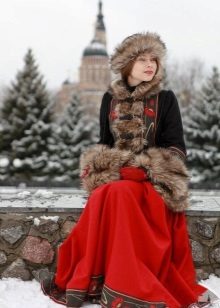

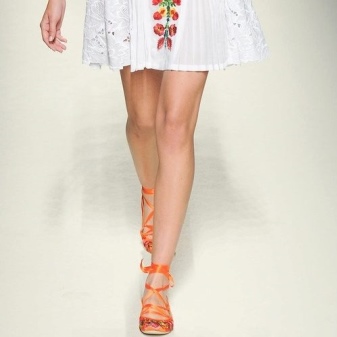
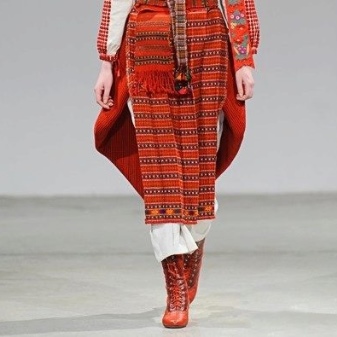
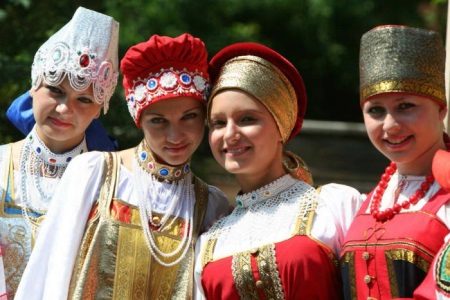
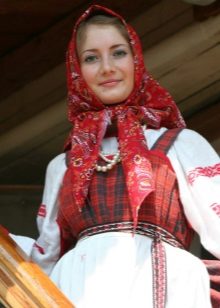
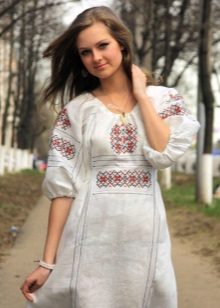
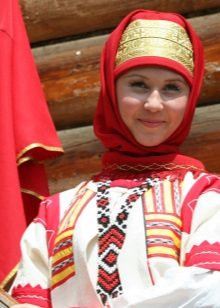










I want a red Russian dress for a photo shoot. There are such beautiful models!